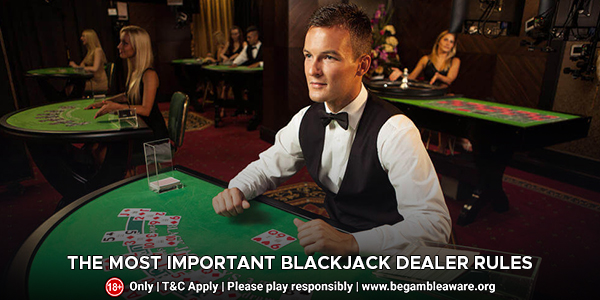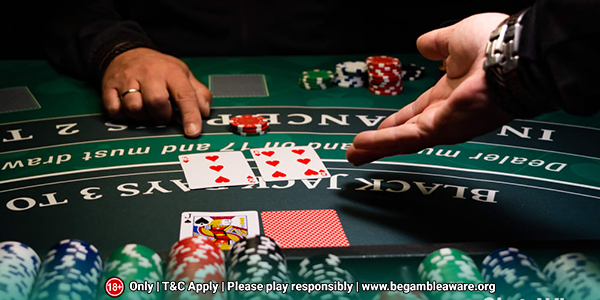
Also, in 2021, the rules are easy, but the gameplay is thrilling, and the game offers a chance to make a high-skilled strategy. In reality, for the player with a mathematical advantage who plays an exact game and can determine the value of cards, chances are often in the player’s favor.
Even for the novice player who can play a decent game, the odds are lower, making Blackjack extremely appealing games to play at the casino.
In the present, Blackjack is the one card game played at each American casino. Since it is a very popular house game, Blackjack is played with slight differences in rules. The version played in casinos is played by the house player (a “permanent banking institution”).
When playing casino, the blackjack dealer stays standing while players sit. The blackjack dealer is responsible for managing every aspect of the game, from shuffling the cards and dealing with the cards to handling all bets. In the game at home, each player can play”the dealer” (a “changing bank”).
The GAME’S OBJECT
Every participant strives at beating the dealer by getting the number at the closest to 21 feasible while not going over 21.
CARD Values/Scores
It is each player’s decision whether an Ace is worth 11 or 1. The face value is 10, and every other card has its pip.
Betting
Before starting the deal, every player puts chips or a bet before them in the area they have designated. The minimum and maximum limits are set on the bet, and the limits are between $2 and $500.
The Cut And Shuffle
The dealer thoroughly shuffles the various parts of the deck until all cards are combined and mixed. The dealer chooses who cuts, and the insert card is set up so that the remaining 60 to 75 cards are left, or therefore will not be used.

The Deal
After all, players have placed bets on the table, and the dealer deals one face-up card to each player who is rotating clockwise. Then, they each get one face-up card to the players themselves. The second round of cards is handed out face-up to each player. However, the dealer will take one card and put it face-down.
Each player, excluding the blackjack dealer, gets two cards face-up, and the blackjack dealer is dealt one face-up card and one with a face down. (In certain games, which are played with just one deck, players’ cards will be dealt face-down, and they hold the cards.
The Play
The player on the left starts first and must decide the best option “stand” (not request an additional card) instead of “hit” (ask to receive a second card to achieve 21 or perhaps hit exactly). In other words, a player could sit on the two cards initially handed to them.
Or could ask the blackjack dealer for more cards each at a time before deciding not to take a stand on the sum (if it’s 21 or less) or go “bust” (if it’s above 21). If the latter is the situation, the player loses, and the blackjack dealer gets the amount bet. The blackjack dealer turns to the next player on their left and treats them differently.
A combination of an Ace with a card that is not 10 cards is referred to as “soft hand”. “Soft hand” since the player can consider the ace to be a one or eleven, and also draw or no draws. If a total of 17 is a great game, the person might prefer to draw for an even higher number.
If the draw results in an unlucky hand, by taking the ace as an 11, the player will count the ace as 1 and play on being in a position of standing and “hitting” (asking dealers for more cards each time).
The Play Of the Dealer
After you have served each player, the blackjack dealer’s face-down card is turned over. If the score is more than 17, then it has to stand. When the number is less than 16, it is required to take a credit card.
The blackjack dealer will continue taking cards until they reach at least 17, and at that point, the blackjack dealer is required to stand. If the dealer holds an ace and calculates it as 11 will make the total 17, or greater (but not more than 21).
The blackjack dealer has to take the ace’s number as 11 and then stand. Therefore, the dealer’s choices are automatically for all games, while the player has the option of picking either one or two cards.
Insurance
If the dealer’s face-up card has an Ace, one of the players can place an additional bet at least half of the initial wager that the dealer’s hand is a ten-card, that is, blackjack to the house.
When all bets are made, the dealer is looking at the card in his hole. If it’s a ten-card, the dealer will turn it up, and those who placed the insurance bet are rewarded and get more than their half-bet, which is the two-to-one payout.
If a blackjack happens for the dealer, then, of course, the hand is completed, and the players’ primary bets are refunded if a player is blackjack-playing or more, in which case it’s an off. Insurance is never an ideal option for the gambler unless they’re certain that an unusually large number of ten cards remain unallocated.
Conclusion
There is nothing better than the experience of others. As you’ve come to know the basics of blackjack and dealer rules of blackjack, you’ll be able to adjust your strategies accordingly to enhance your play.